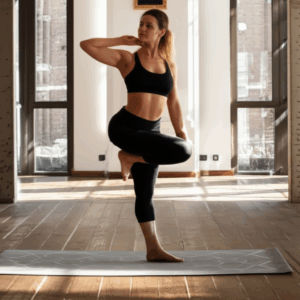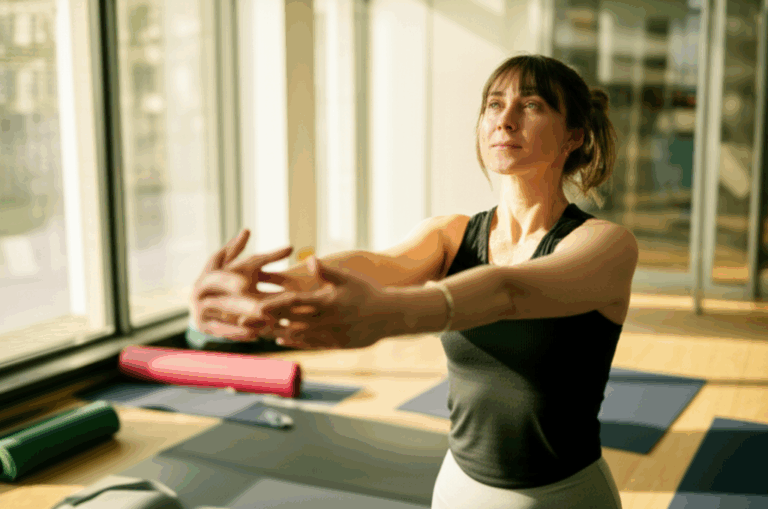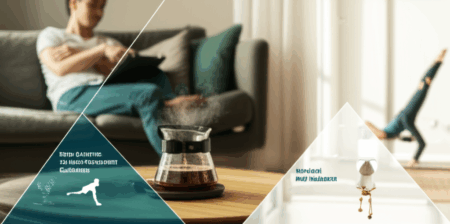The profound link between physical activity and mental well-being is widely acknowledged. Regular exercise has consistently been shown to alleviate symptoms of depression and anxiety, reduce stress, improve mood, and enhance overall cognitive function. However, recent insights from a University of Georgia study, published in Medicine and Science in Sports and Exercise, suggest that the mental health benefits of exercise are not solely dependent on the “dose” (duration or calories burned) but are significantly influenced by where, how, and why individuals engage in physical activity. This research underscores the importance of context, setting, and motivation in shaping the psychological outcomes of exercise.

The Impact of “Where”: Environment Matters
The environment in which exercise takes place plays a pivotal role in its mental health benefits. Research consistently indicates that engaging in physical activity outdoors, particularly in “green” natural environments, offers more substantial psychological advantages compared to indoor or urban settings.
Green Exercise: A Nature-Induced Boost
Exercising in natural spaces such as parks, forests, or along scenic trails has been linked to greater reductions in stress, anxiety, and depression. This phenomenon, often termed “green exercise,” is supported by both physiological and psychological mechanisms. Exposure to nature during physical activity can activate the parasympathetic nervous system, promoting a “rest and digest” response that counteracts stress-induced physiological arousal. Studies show that green environments can lower cortisol levels more effectively than indoor settings, aiding in stress recovery. Furthermore, natural surroundings, fresh air, and sunlight exposure enhance the production of mood-regulating neurotransmitters like serotonin and dopamine, leading to improved mood and cognitive restoration. Even simple activities like walking in nature have been proven to reduce feelings of anxiety and depression and improve overall well-being.
Indoor vs. Outdoor: A Contextual Difference
While indoor exercise certainly offers mental health benefits—contributing to endorphin release, stress reduction, and improved sleep—the unique sensory input and calming effects of natural environments appear to amplify these positive responses. For instance, jogging along forest trails may lead to higher levels of endorphins than treadmill running, maximizing mood-enhancing effects through the combination of physical activity and greenery. The choice of environment, therefore, can significantly influence the depth of psychological benefit derived from exercise.

The Influence of “How”: Type, Intensity, and Social Dynamics
The specific characteristics of exercise, including its type, intensity, and whether it involves social interaction, also profoundly affect mental health outcomes.
Exercise Type: Tailoring Activity for Mental Gains
Different types of exercise offer varying benefits for mental well-being:
- Aerobic Exercise: Activities like running, swimming, cycling, and dancing are highly effective for reducing anxiety and depression. They stimulate the production of endorphins and serotonin, which are crucial for mood regulation. Consistent engagement in aerobic exercise can be as effective as medication or therapy for managing mild to moderate depression and anxiety.
- Strength Training: Lifting weights or engaging in bodyweight exercises can improve self-esteem and body image, in addition to reducing symptoms of depression and anxiety.
- Mind-Body Practices: Yoga, Tai Chi, and Pilates, which combine physical postures, breathing exercises, and meditation, are particularly effective in reducing stress, improving mood, and promoting mindfulness. They help calm the nervous system and enhance mental focus.
- Walking: As one of the most accessible forms of exercise, walking, even at a low intensity, can significantly improve mood and reduce anxiety and depression.
Intensity Levels: Finding the Right “Dose”
While most forms of exercise offer mental health benefits, studies suggest that even low-intensity activities can be beneficial. Moderate to high-intensity aerobic exercise may be particularly effective in reducing depressive symptoms. However, the general consensus is that any physical activity is better than none, and consistency is often more critical than intense bursts. For individuals with mental health concerns, starting slowly and gradually increasing activity levels is often recommended.
Social Context: The Power of Connection
Exercising with others can significantly enhance mental health outcomes. Group fitness classes, team sports, or simply exercising with a friend or family member provide opportunities for social interaction, which can reduce feelings of loneliness and isolation. Social exercise can also boost self-esteem, improve mood, and strengthen relationships, providing external motivation and accountability that can help individuals adhere to an exercise routine.

The Significance of “Why”: Motivation and Purpose
The underlying motivation or purpose for exercising can be a critical determinant of its mental health impact. The University of Georgia study highlighted that the “meaning, the setting, and the experience surrounding the activity” are as important as the physical exertion itself.
Intrinsic vs. Extrinsic Motivation
Exercising for intrinsic reasons—such as enjoyment, personal fulfillment, or a sense of well-being—tends to yield greater mental health benefits compared to activities undertaken solely for external goals or obligations. For instance, leisure-time physical activities like running for pleasure or participating in recreational sports correlate with reduced depression and anxiety. Conversely, physical activity stemming from job-related labor or housework may not produce similar psychological improvements, as the context and motivation are often different. The distinction lies in whether the activity is chosen for personal enrichment and enjoyment versus being a chore or obligation.
Psychological Mechanisms of Motivation
The “why” behind exercise taps into several psychological mechanisms that contribute to improved mental health:
- Distraction: Exercise can provide a healthy distraction from negative thoughts and worries, offering a temporary escape from rumination.
- Self-Efficacy and Accomplishment: Achieving exercise goals, no matter how small, can foster a sense of accomplishment, improve self-esteem, and enhance feelings of control over one’s life.
- Stress Management: Engaging in enjoyable physical activity can be a powerful stress reliever, helping individuals manage daily stressors more effectively and improving their emotional resilience.
- Coping Mechanism: For many, exercise serves as a constructive coping mechanism, providing an outlet for frustrations and helping regulate emotions.
Conclusion: A Holistic View of Exercise for Mental Health
The accumulating evidence, particularly from recent studies, reinforces that the relationship between exercise and mental health is multifaceted. It’s not merely about the amount of physical activity but also the qualitative aspects of the experience. By considering where we exercise (prioritizing natural environments), how we exercise (choosing enjoyable types and engaging socially), and why we exercise (fostering intrinsic motivation and finding purpose), individuals can optimize the profound psychological benefits that physical activity offers. This holistic understanding empowers both individuals and mental health professionals to design more effective and sustainable exercise interventions for enhanced mental well-being.







